IOM Yemen: A Father’s Story of Perseverance to Build A Safe Home Amidst Conflict and Floods
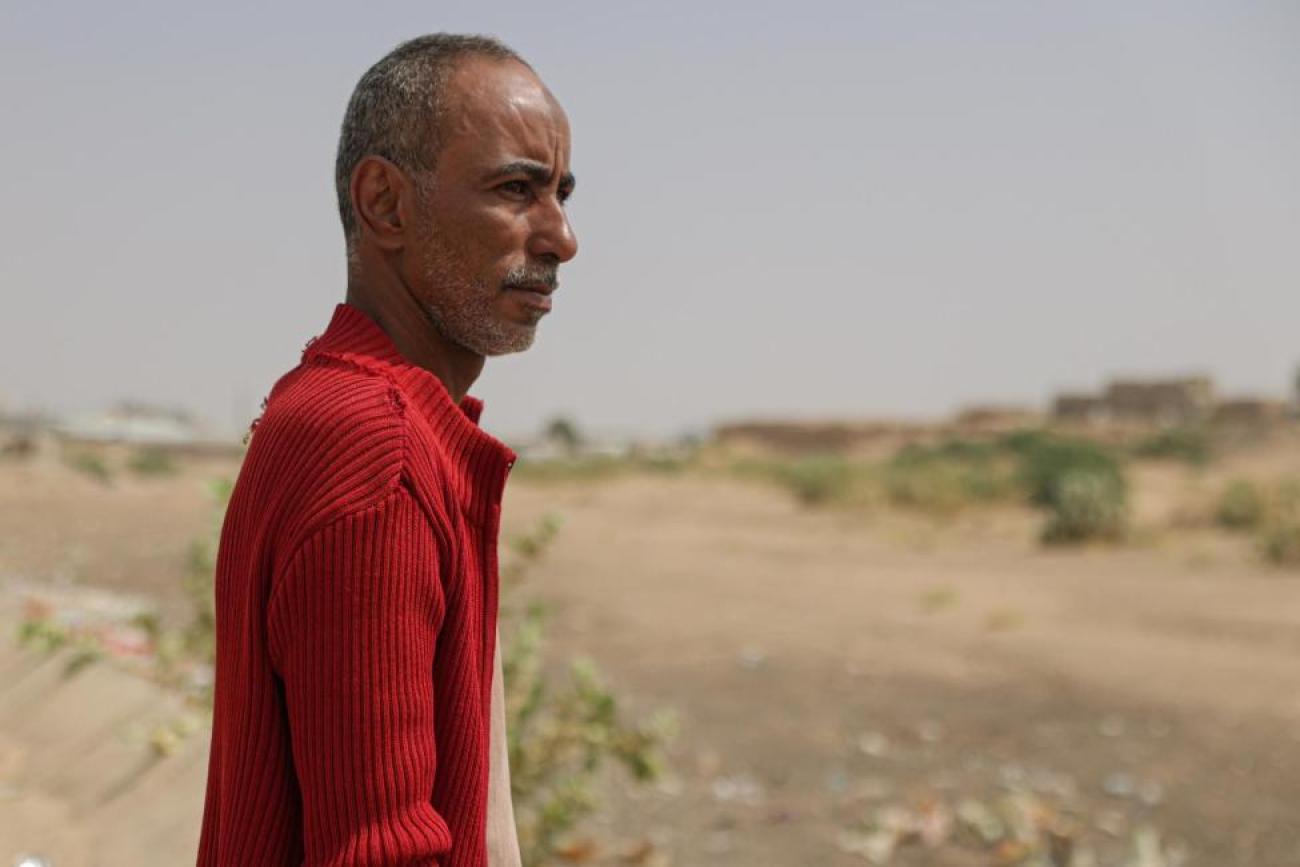
By: Mennatallah Homaid | Senior Donor Visibility and Communications Assistant with IOM Yemen
Ma’rib, Yemen
In a country raged by nine years of conflict, where 4.5 million people have become displaced, the definition of home varies significantly. For Faiz, home is where his family is.
Faiz’s life in Al Hodeidah, Yemen’s fourth-largest city, had its challenges, but he was content within the confines of his two-room house where he lived with his wife and four children. With his earnings as a motorbike driver, he earned a decent living – at least enough to feed his children and tend to their most basic needs.
For Faiz and his family, having a roof over their heads to shield them from the sun and rain and being able to sleep soundly was more than enough to call it home, until the war took it all away.
“It’s difficult to put into words,” says Faiz, recalling the war that forced them into displacement five years ago. “Airstrikes raged above us, and our walls were cracked and filled with holes from shrapnel. We had no electricity and no means to make a living.”
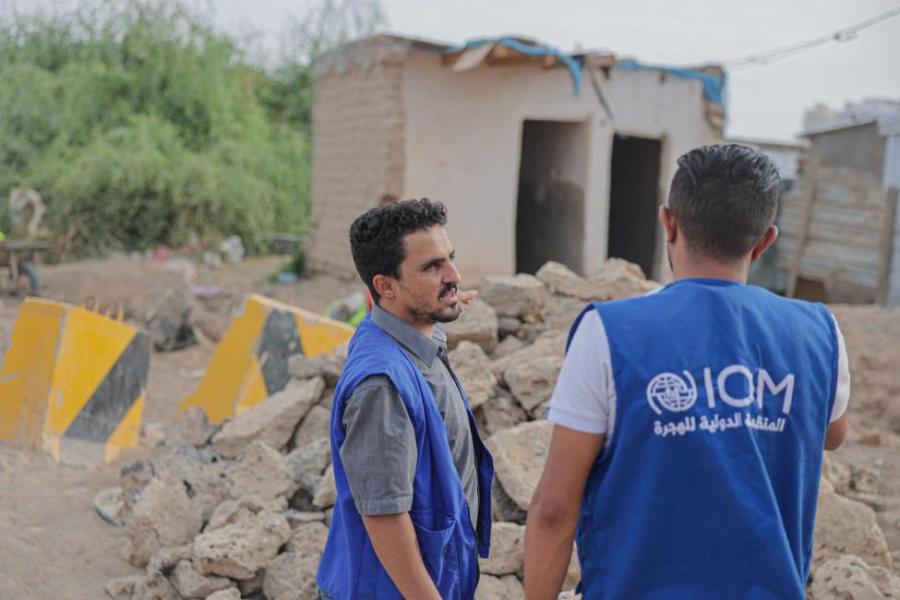
Faiz still vividly remembers the day he arrived in Ma’rib with his family. During the first month, he stayed with his brothers, who had already been displaced, before he managed to secure a spot at Al Jufainah camp, Yemen’s largest displacement site, currently hosting over 13,700 displaced families.
“The situation was dire,” Faiz recalls. “I had nothing to build a shelter with but some flour sacks, fabric covers, and old clothes, and we had a single mattress that I shared with my wife and daughter.”
The shelter that Faiz made was not only that fragile that it could not withstand the rain and wind but also so small that Faiz had to ask his sister to host his three little boys in her shelter further down the camp.
Desperate as he might have been, Faiz was thrilled when he found an old tent discarded in the valley. He immediately repaired it to improve his shelter and bring his family under one roof again. Sadly, not even this makeshift shelter could withstand the harsh weather.
“My neighbour felt sorry for us seeing our shelter destroyed, so he gave me a big tent to protect my family from the harsh weather,” he explains, “His kindness rekindled my hope and things soon started to brighten up for my family,” adds Faiz. He later started working as a motorbike driver, which allowed him to start providing some of the essentials for his family.
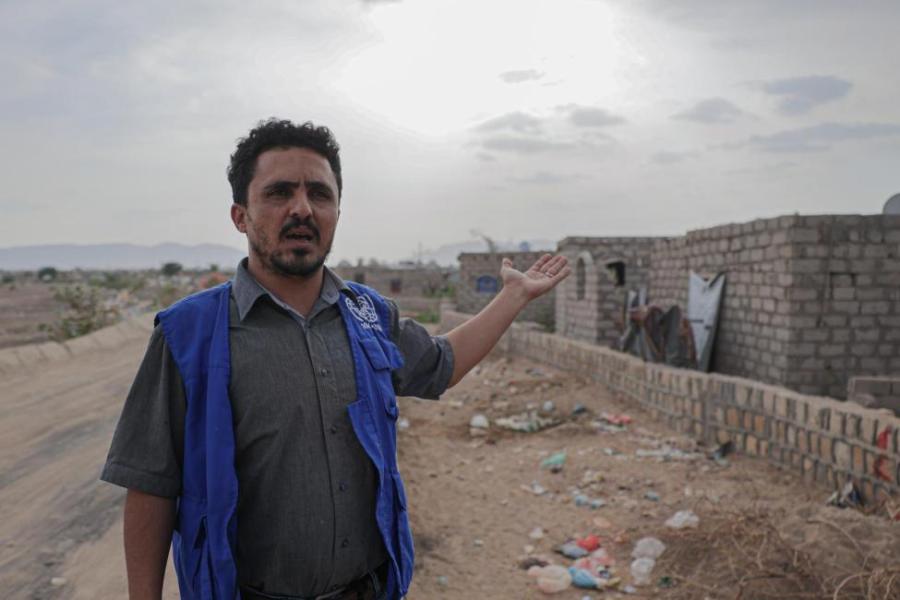
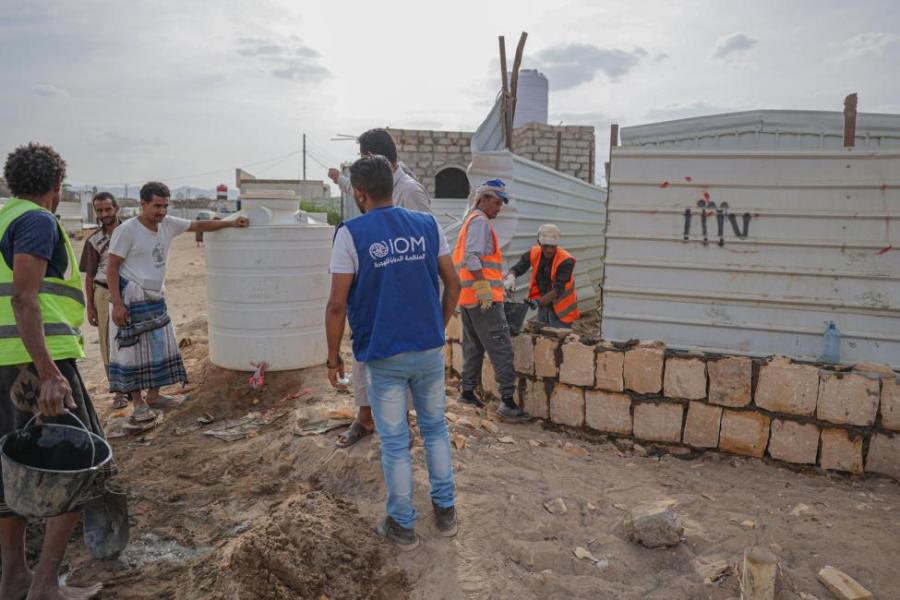
One day, as the rain began to fall, the family was startled by heavy pounding on the door. It was the camp security team, urging them to leave the shelter immediately. Faiz was terrified and shocked, unsure of what was happening.
“I didn’t know how flooding worked in Ma’rib; the ground is sandy here,” says Faiz, recalling the first time he experienced torrential rain in Ma’rib. “I thought it would be similar to our valley back home, but it was much worse. The force of the floods was unstoppable.”
That night, the floods swept away countless shelters and Faiz lost his once more.
In Ma’rib, many displacement sites are located close to flood paths without suitable water barriers and the shelters do little to provide protection from torrential rains. In 2022, the floods and winds caused havoc, destroying the shelters and houses of close to 600 families and partially damaging the shelters of nearly 4,000 families in IOM-managed displacement sites across the governorate.
“The most painful thing was when the floods struck at night and I had to rush my children out of the shelter, not knowing which direction to go in the dark, cold night,” he says.
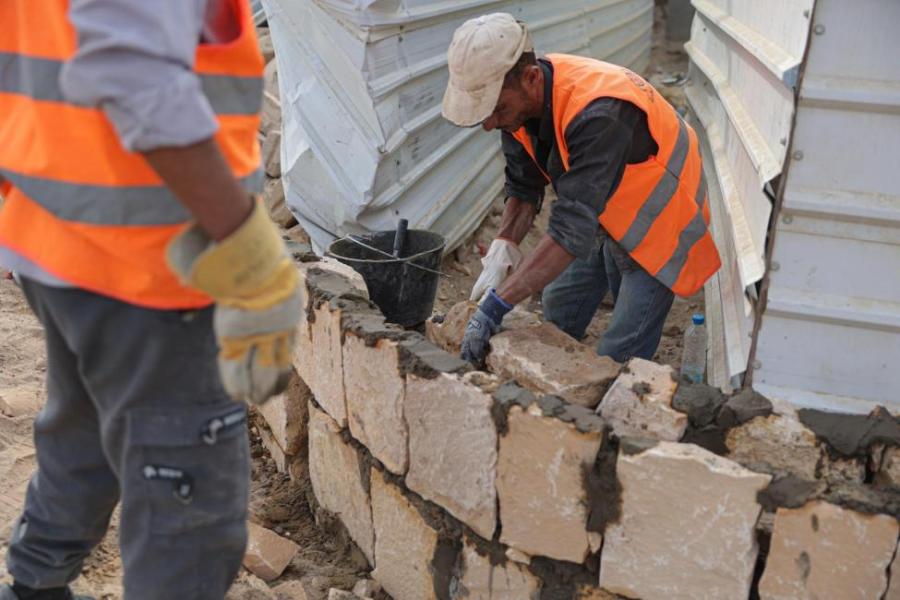
“Local communities in Ma’rib have been used to a certain level of rainfall each year and have been planning agricultural activities and preparing their shelters accordingly,” explains Mohammed Faisal, Project Assistant with IOM’s Engineering Support Unit in Ma’rib. “This has changed now, as we are witnessing unexpected, often extreme, and unmanageable weather patterns.”
The International Organization for Migration (IOM) supports families affected by flooding in Ma’rib through a multi-sectoral response that includes both long term and urgent needs, ranging from disaster risk reduction projects to the distribution of rapid response mechanism kits and emergency shelter kits, among other essential relief items. The emergency shelter kit Faiz received enabled him to rebuild his family’s shelter.
To mitigate the risk of floods in Al Jufainah, IOM has initiated a two-phase plan: building gabion walls along the main waterways and enhancing the drainage system inside the camps with water channels.
“We have installed a 2,600-meter-long gabion wall along the flood path,” explains Mohammed. “Additionally, we have constructed walls to mitigate the effects of floods and established drainage channels within the camp.”
While the gabion wall may not entirely prevent the floods from reaching the shelters, it has significantly reduced the extent of damage. Prior to the wall’s construction, over 3750 families experienced partial or total damage to their shelters. According to Mohammed, the gabion wall and drainage system have improved the situation by 70 percent.
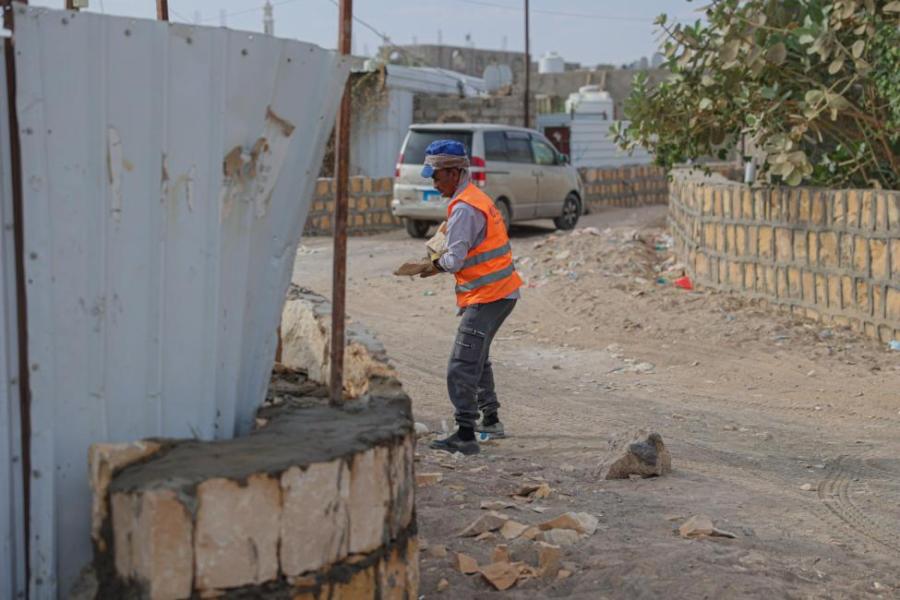
Faiz distinctly recalls one night when it suddenly started pouring around midnight. He stood with his children in front of their shelter, watching as the floods raged outside.
“That day, I felt blessed that my shelter was not damaged once more and that I didn’t have to start from scratch again.”
IOM’s disaster risk reduction project in Ma’rib is funded by EU Humanitarian Aid and USAID's Bureau of Humanitarian Assistance and the Central Emergency Relief Fund.

